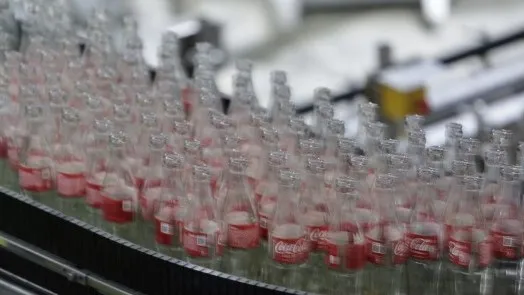 On a global scale, most large cities are urban wet islands. Photography Page Light Studios / Getty Images© City dwellers often complain about bad weather. An American study published in the scientific journal PNAS proves them right. Its authors claim that many cities around the world are more prone to precipitation than the surrounding countryside.
On a global scale, most large cities are urban wet islands. Photography Page Light Studios / Getty Images© City dwellers often complain about bad weather. An American study published in the scientific journal PNAS proves them right. Its authors claim that many cities around the world are more prone to precipitation than the surrounding countryside.
Does it seem to rain more in the city than in the country? It's backed up by science
by ETX
Researchers from the Universities of Texas and Georgia came to this conclusion after analyzing rainfall data from 1056 cities worldwide between 2001 and 2020, as well as from the surrounding rural areas. They found that 63% of these metropolises are more exposed to rainfall than the rural areas surrounding them.
In some cases, the difference is striking. For example, an average of 127 millimeters more rain falls in Houston (USA) than in the surrounding countryside. The same phenomenon can be observed in Ho Chi Minh City (Vietnam) and Sydney (Australia), where more than 100 millimeters more rain falls per year than in the surrounding area. This makes these two cities “urban wet islands.”
The opposite pattern can be observed in other global metropolises. In Seattle (USA) and Rio de Janeiro (Brazil), for example, it rains much less than in the surrounding area, making them “dry islands.” Generally speaking, scientists have found that “urban dry islands” are cities located in plains or valleys. The surrounding mountains would expose them less to precipitation.
But on a global scale, most large cities are urban wet islands. Zong-Liang Yang, professor of geology at the University of Texas and co-author of the study, argues that the design of urban space has a significant impact on this meteorological phenomenon. “The buildings further enhance [the convergence of air toward city centers] by slowing the winds, resulting in a stronger upward motion of air. This upward motion promotes the condensation of water vapor and cloud formation, which are critical conditions for producing rainfall and precipitation,” he explains in a press release.
Population density also influences the amount of precipitation recorded in cities. This is because large populations generally create denser, more extensive urban areas, which produce more greenhouse gas emissions. This, in turn, disrupts the water cycle and increases the potential for heavy precipitation. “[I]f the local climate is hotter, if it's wetter, than it may have a larger rainfall anomaly compared to the cities in cooler, drier places,” points out Xinxin Sui, co-author of the study, in the same press release.
Climatologists have long known that cities can concentrate precipitation. But this study is the first to show that this is a global phenomenon. In future, urban planners could use the findings of this research to design cities differently, and better prepare them for the consequences of climate change.
Reference
Provided by ETX
- ※ Picks respects the rights of all copyright holders. If you do wish to make material edits, you will need to run them by the copyright holder for approval.
more from
ETX
-

ETX
EU lawmakers vote to bar carry-on luggage fees on planes
 2025-06-26 00:00:00
2025-06-26 00:00:00 -

ETX
Earth's satellites at risk if asteroid smashes into Moon: study
 2025-06-26 00:00:00
2025-06-26 00:00:00 -

ETX
Permafrost in Swiss Alps at record warmth
 2025-06-25 00:00:00
2025-06-25 00:00:00 -

ETX
Music streaming is much more polluting than we imagine
 2025-06-25 00:00:00
2025-06-25 00:00:00
BEST STORIES
-

The Conversation
Dopamine can make it hard to put down our phone or abandon the online shopping cart. Here’s why
 2025-06-23 00:00:00
2025-06-23 00:00:00 -

KoreaJoongAngDaily
In the age of TripAdvisor, travel agencies get creative to court Gen Z
 2025-06-22 00:00:00
2025-06-22 00:00:00 -

Visit Dubai
Dreaming of a Dubai beach holiday?
 2025-06-21 00:00:00
2025-06-21 00:00:00 -

AllblancTV
Super Morning Fullbody Home Workout (Part 1/2)
 2025-06-23 00:00:00
2025-06-23 00:00:00
Lifestyle
-

ETX
How Barcelona's buses are helping to spot bad drivers
 2025-06-24 00:00:00
2025-06-24 00:00:00 -

ETX
How to keep your pet cool and comfortable this summer
 2025-06-24 00:00:00
2025-06-24 00:00:00 -

ETX
By 2026, US adults will spend even less time watching TV
 2025-06-23 00:00:00
2025-06-23 00:00:00 -

ETX
'More microplastics in glass bottles than plastic: study'
 2025-06-23 00:00:00
2025-06-23 00:00:00